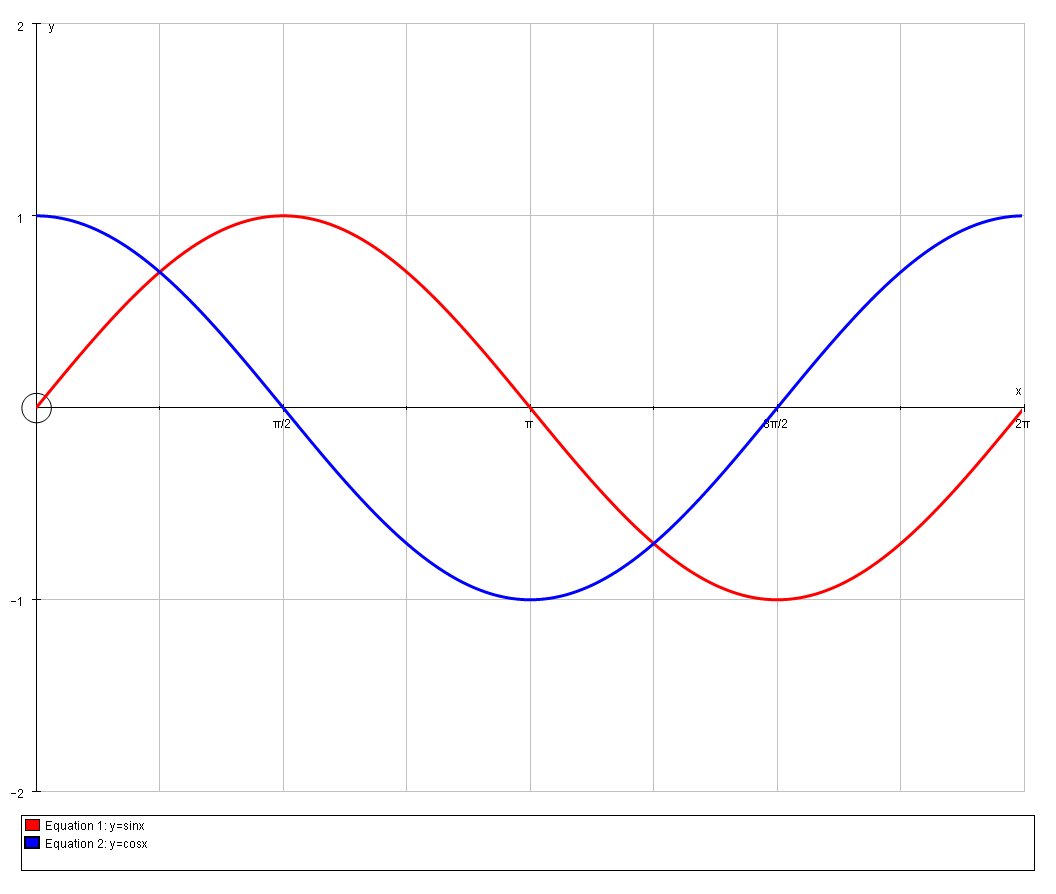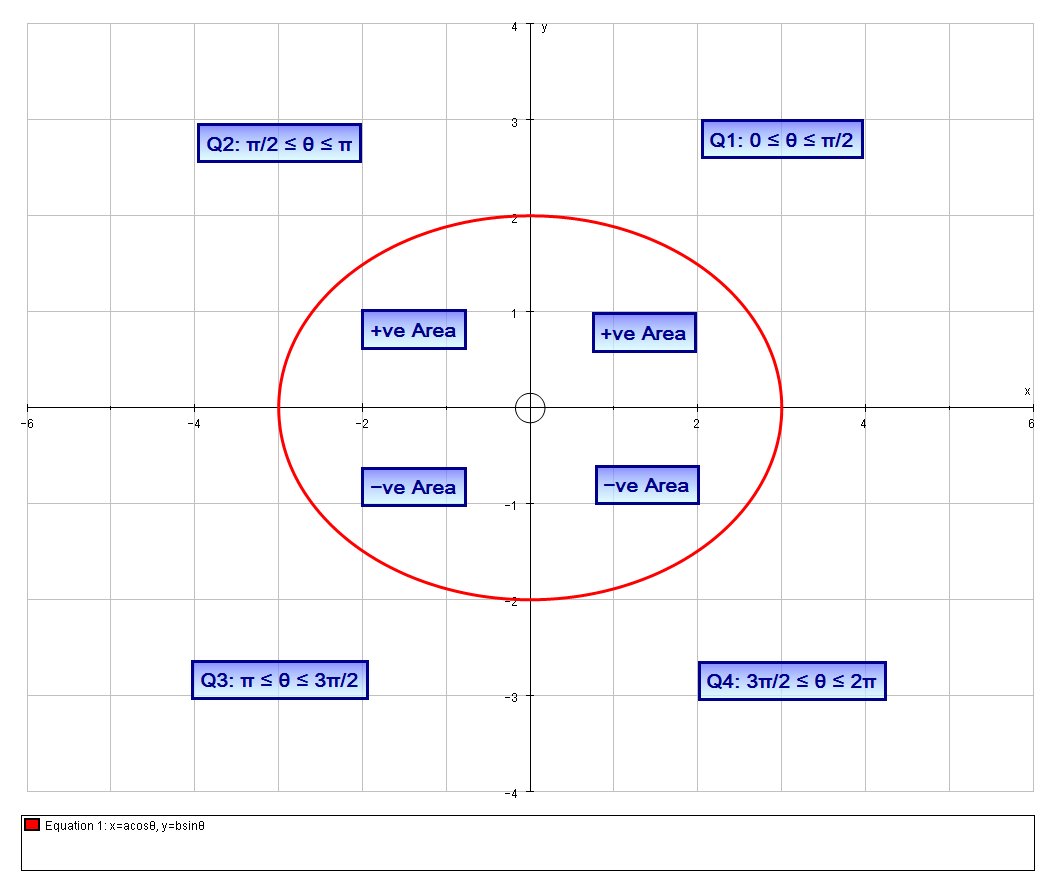What is the area bounded by the parametric equations? : # x=acos theta # and # y=bsin theta #
1 Answer
It is vital when dealing with parametric equations (or polar coordinates) to get a full understanding of the effect of the parameter on the curve (and sign) so that positive and negative areas can be determined and dealt with.
We have parametric equations:
# x=acos theta #
# y=bsin theta #
Where

#0 le theta le pi/2 => x>0, y>0#
#pi/2 le theta le pi => x<0, y>0#
#pi le theta le (3pi)/2 => x<0, y<0#
#(3pi)/2 le theta le 2pi => x>0, y<0#
So we can see that as
If we now examine the parametric curve

We can see that we can evaluate the area by symmetry as
Thus we can represent the area of the ellipse by:
# A = 4 \ int_(x=0)^(x=a) \ y \ dx #
Now we will change variable from
# x=acos theta => dx/(d theta)=-asin theta #
# y=bsin theta #
And for the limits of integration we have:
# x=0 => acos theta =0 => theta=pi/2 #
# x=a => acos theta =a => theta=0 #
And so we can evaluate the integral as follows;
# A = 4 \ int_(pi/2)^(0) \ (bsin theta)(-asin theta) \ d theta #
# \ \ = -4ab \ int_(pi/2)^(0) \ sin^2 theta \ d theta #
# \ \ = 4ab \ int_(0)^(pi/2) \ sin^2 theta \ d theta #
# \ \ = 4ab \ int_(0)^(pi/2) \ sin^2 theta \ d theta #
# \ \ = 4ab \ int_(0)^(pi/2) \ (1-cos2theta)/2 \ d theta #
# \ \ = 2ab \ int_(0)^(pi/2) \ 1-cos2theta \ d theta #
# \ \ = 2ab \ [theta-(sin2theta)/2]_(0)^(pi/2)#
# \ \ = 2ab \ {(pi/2-0)-(0-0)}#
# \ \ = pi ab#

